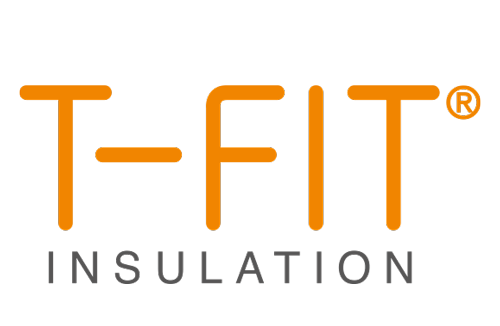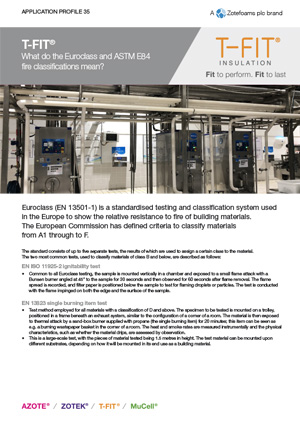T-FIT Application profile 35 -Euroclass and ASTM E-84
What do the Euroclass and ASTM E84 fire classifications mean?
Euroclass (EN 13501-1) is a standardized testing and classification system used in Europe to show the relative resistance to fire of building materials. The European Commission has defined criteria to classify materials from A1 through to F.
The standard consists of up to five separate tests, the results of which are used to assign a certain class to the material. The two most common tests, used to classify materials of class B and below, are described as follows:
EN ISO 11925-2 ignitability test
- Common to all Euroclass testing, the sample is mounted vertically in a chamber and exposed to a small flame attack with a Bunsen burner angled at 45° to the sample for 30 seconds and then observed for 60 seconds after flame removal. The flame spread is recorded, and filter paper is positioned below the sample to test for flaming droplets or particles. The test is conducted with the flame impinged on both the edge and the surface of the sample.
EN 13823 single burning item test
- Test method employed for all materials with a classification of D and above. The specimen to be tested is mounted on a trolley, positioned in a frame beneath an exhaust system, similar to the configuration of a corner of a room. The material is then exposed to thermal attack by a sand-box burner supplied with propane (the single burning item) for 20 minutes; this item can be seen as e.g. a burning wastepaper basket in the corner of a room. The heat and smoke rates are measured instrumentally and the physical characteristics, such as whether the material drips, are assessed by observation.
- This is a large-scale test, with the pieces of material tested being 4.92-ft in height. The test material can be mounted upon different substrates, depending on how it will be mounted in its end use as a building material.

